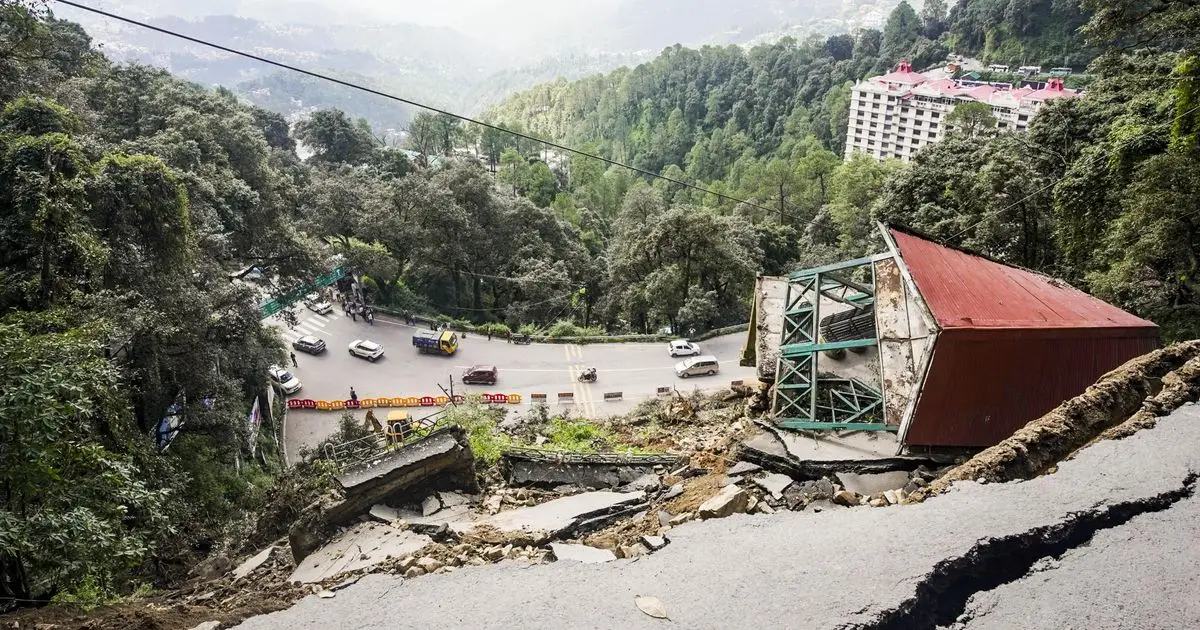Himachal Pradesh Rain Disaster 2025: 37 Dead, ₹400 Crore Damage Amid Climate Crisis
By: Javid Amin | 04 July 2025
A Monsoon of Destruction
Himachal Pradesh is grappling with one of its worst natural disasters in recent memory. Torrential rainfall over the past week has devastated the hill state, leaving a trail of destruction in its wake. As of July 4, 2025, at least 37 people have lost their lives, and the economic losses have already surpassed ₹400 crore, according to preliminary estimates by the Himachal Pradesh State Disaster Management Authority (HPSDMA).
The India Meteorological Department (IMD) has sounded a fresh alert, warning of continued heavy rainfall until July 7. With roads cut off, towns submerged, and entire communities displaced, the picturesque Himalayan state has been transformed into a crisis zone.
Mandi: Ground Zero of the Himachal Pradesh Rain Disaster
Among the districts hardest hit, Mandi stands out as the epicenter of devastation. In particular, the Thunag subdivision has witnessed unprecedented damage:
- Roads and bridges washed away
- Power lines snapped
- Drinking water facilities completely paralyzed
- Entire villages isolated
Over 40 people are reported missing in Mandi alone, and a devastated village has prompted emergency air-drops of food and essentials by the Indian Air Force.
DC Rana, Special Secretary of the State Disaster Management Authority, stated:
“We have recorded over ₹400 crore in losses so far, as entered in our system. But the actual damage is likely to be much higher. Our primary focus at the moment is on search, rescue, and restoration.”
Death Toll Rising: A Grim Human Cost
The monsoon deluge has claimed 37 lives from rain-related incidents, while another 26 deaths have occurred due to road accidents. The mountainous terrain, already fragile due to deforestation and unchecked construction, has exacerbated the crisis.
Rescue teams fear the death toll could rise significantly as more bodies are recovered from landslide-affected zones and flooded homes.
Rescue and Relief Operations: Racing Against Time
Rescue missions are being carried out by a multi-agency force, including:
- State Police
- Home Guards and SDRF (State Disaster Response Force)
- NDRF (National Disaster Response Force)
- Army and Air Force personnel
Relief camps have been set up across affected districts, with supplies being dispatched on a war footing. Helicopters are air-dropping essential supplies in inaccessible areas.
Local officials, engineers from PWD, Electricity Board, and Jal Shakti Department are working round the clock to restore utilities and clear roadways.
The School Crisis: Children at Risk
In Shimla, relentless downpours have disrupted schools. Flooded classrooms, collapsing infrastructure, and landslide risks have turned education hubs into hazard zones.
Tanuja Thakur, a school student, shared with ANI:
“It’s raining heavily. Water is entering our classrooms, our clothes and books are soaked. Our teachers are telling us it’s better to stay at home.”
Another fear looms large:
“Our school is surrounded by trees. There is always a fear that a tree could fall. Thankfully, we are safe for now.”
Infrastructure in Ruins: Roads, Power, and Water Systems Collapsing
The state is facing a total breakdown of basic infrastructure:
- 250+ roads blocked
- 500+ electricity transformers damaged
- 700+ drinking water schemes disrupted
Several key highways, including portions of the Chandigarh-Manali and Shimla-Kinnaur roads, have been rendered impassable due to landslides and flash floods.
Restoration of services could take weeks, if not months, depending on the severity of damage and weather conditions.
Climate Change: The Unseen Villain
This rain disaster is not an isolated incident. Experts have warned for years that Himachal Pradesh is increasingly vulnerable to extreme weather events due to climate change.
DC Rana echoed this sentiment:
“These events are a consequence of global warming and climate change. Himachal is not untouched by these impacts.”
Key Climate Factors:
- Warmer temperatures melting glaciers faster
- Changing monsoon patterns
- Increase in cloudbursts and intense rainfall events
Unscientific construction, deforestation, and urbanization of fragile hill slopes are amplifying the scale and frequency of disasters.
What Needs to Be Done: Policy and Preparedness
While the current focus is on rescue and relief, the disaster highlights the urgent need for:
- Climate-resilient infrastructure
- Early warning systems in remote districts
- Strict enforcement of environmental norms
- Community disaster training
- Land-use policy reforms to prevent construction in ecologically sensitive areas
Stories of Hope: Courage Amid Crisis
Despite the gloom, stories of resilience and human compassion continue to emerge:
- Local villagers forming chains to rescue those trapped in mudslides
- Volunteers cooking and delivering food to isolated communities
- Doctors trekking miles on foot to reach injured residents
Such stories are a reminder that even in adversity, human spirit shines.
The Road Ahead: Rebuilding With Wisdom
The 2025 Himachal Pradesh rain disaster will leave scars—both emotional and physical. But it also offers an opportunity to rethink development, rebuild sustainably, and restore ecological balance.
It’s a wake-up call not just for Himachal, but for all Himalayan states and policymakers across India.
Rebuilding must go beyond concrete. It must be rooted in wisdom, compassion, and nature-based resilience.



